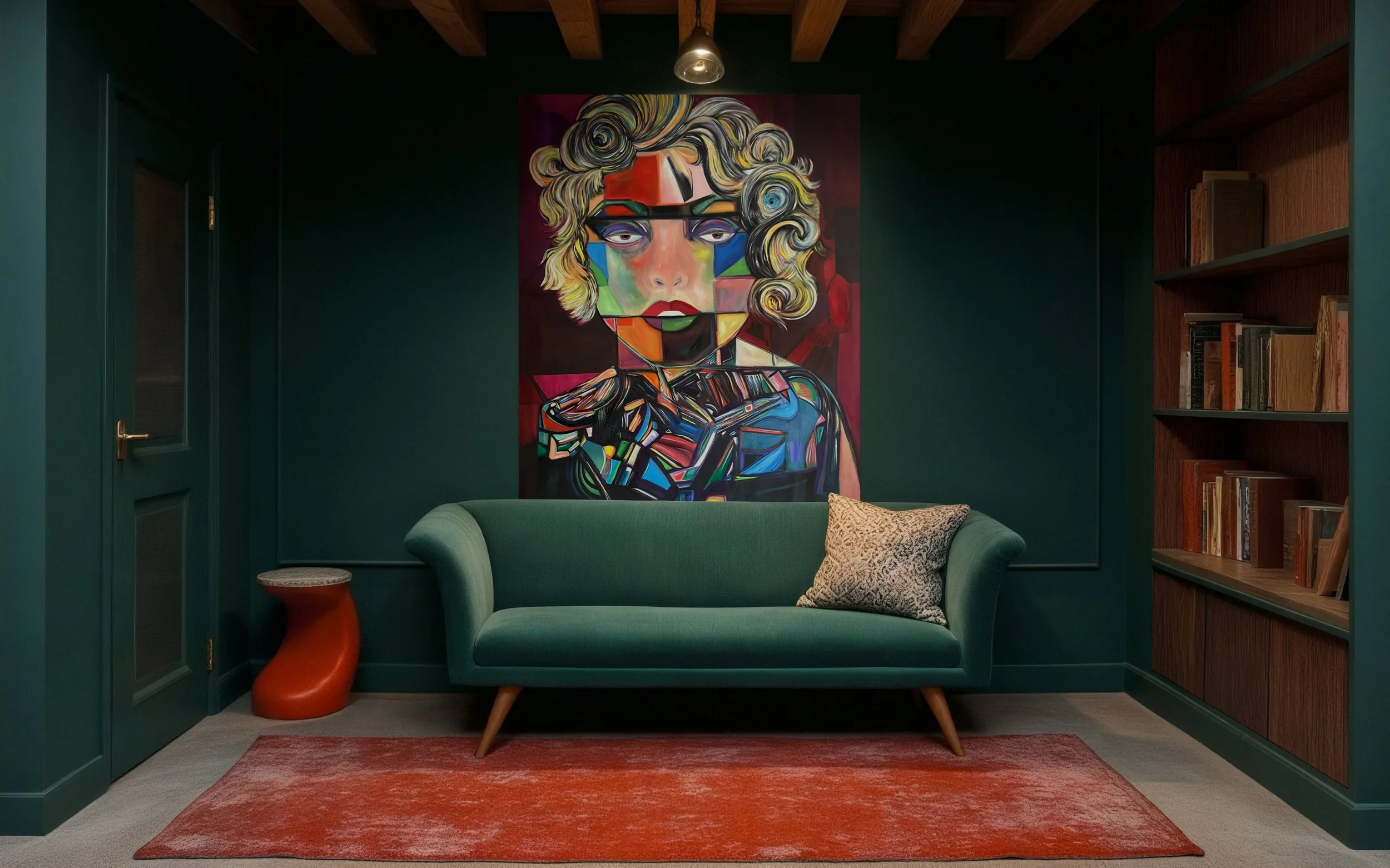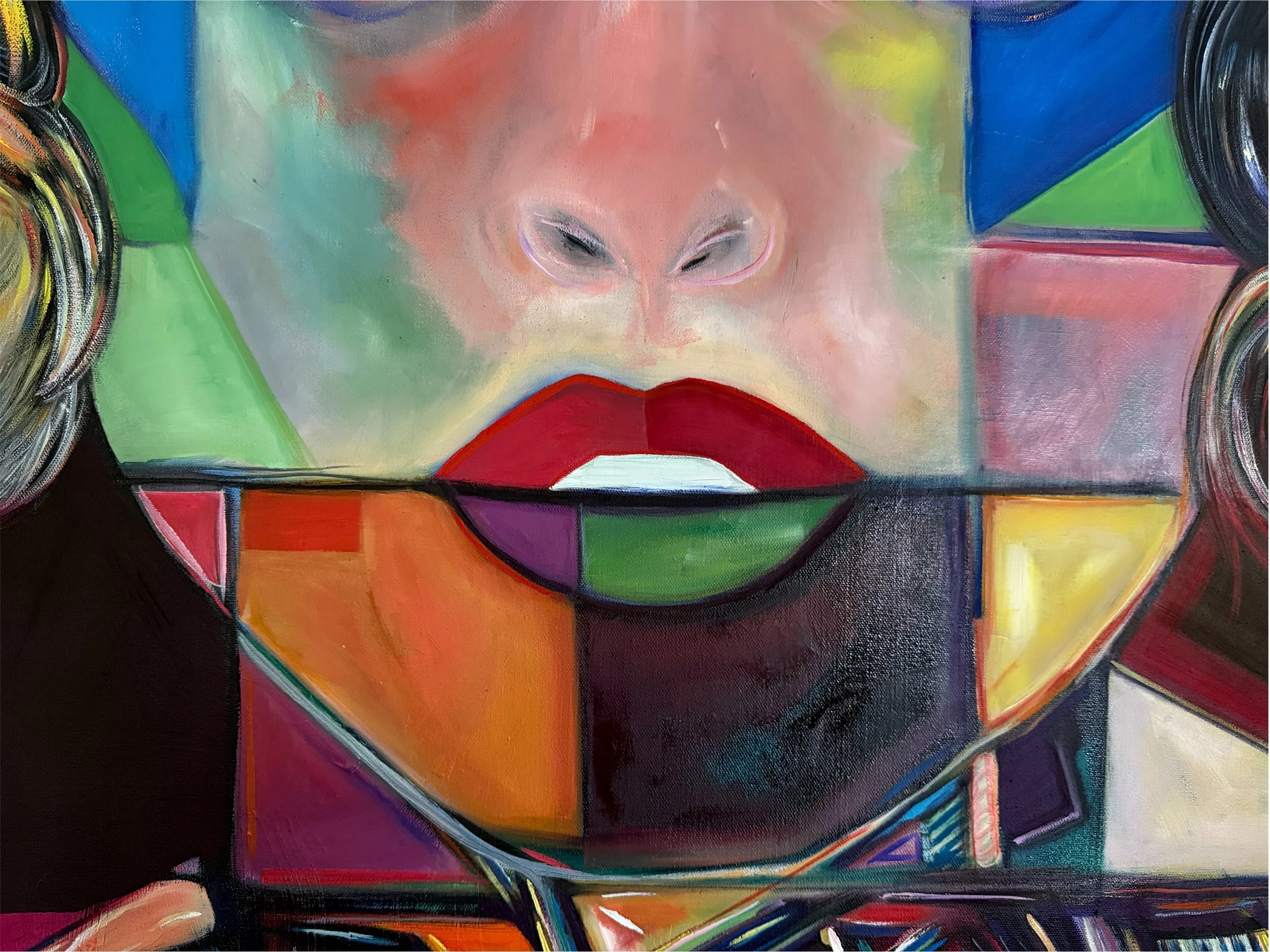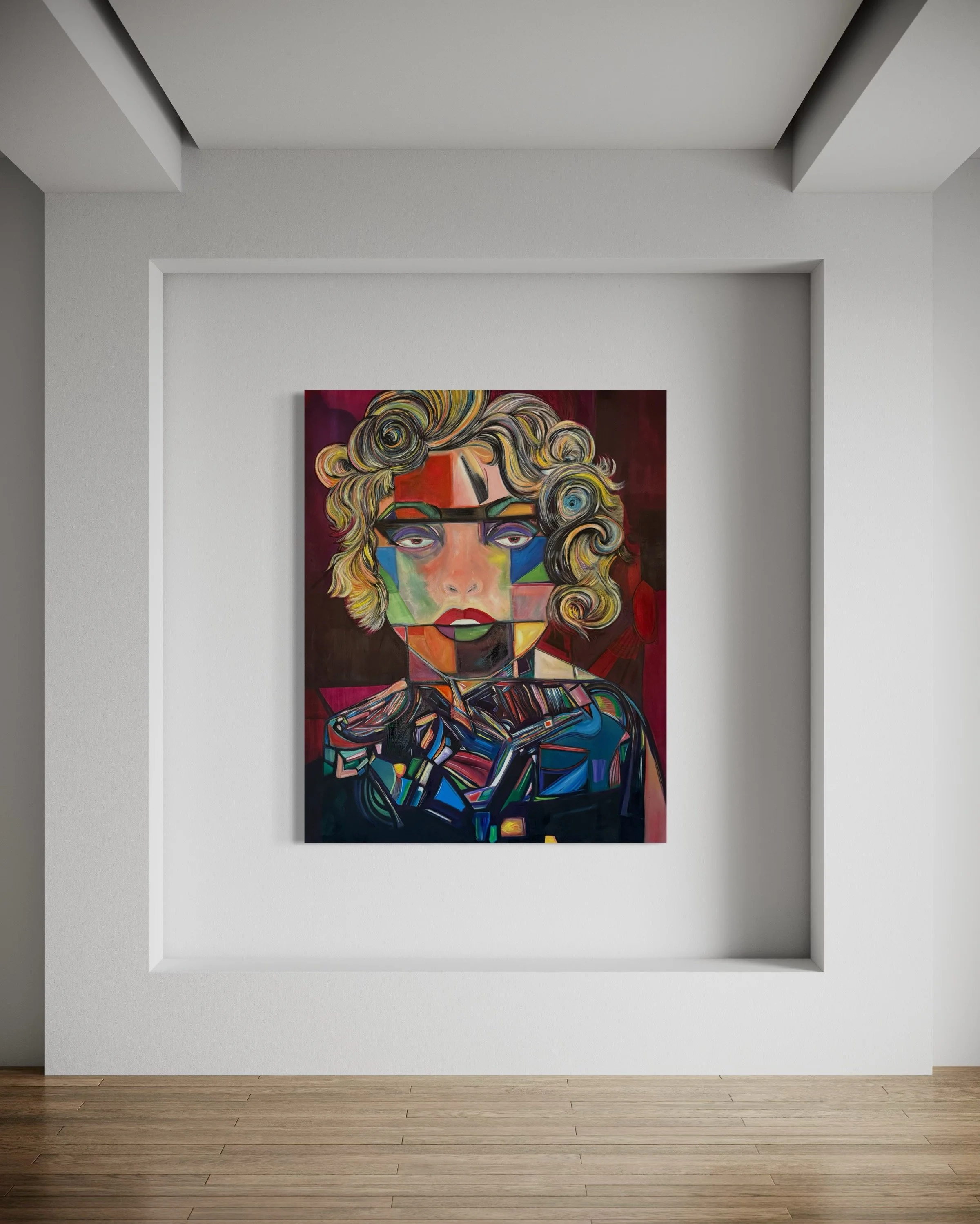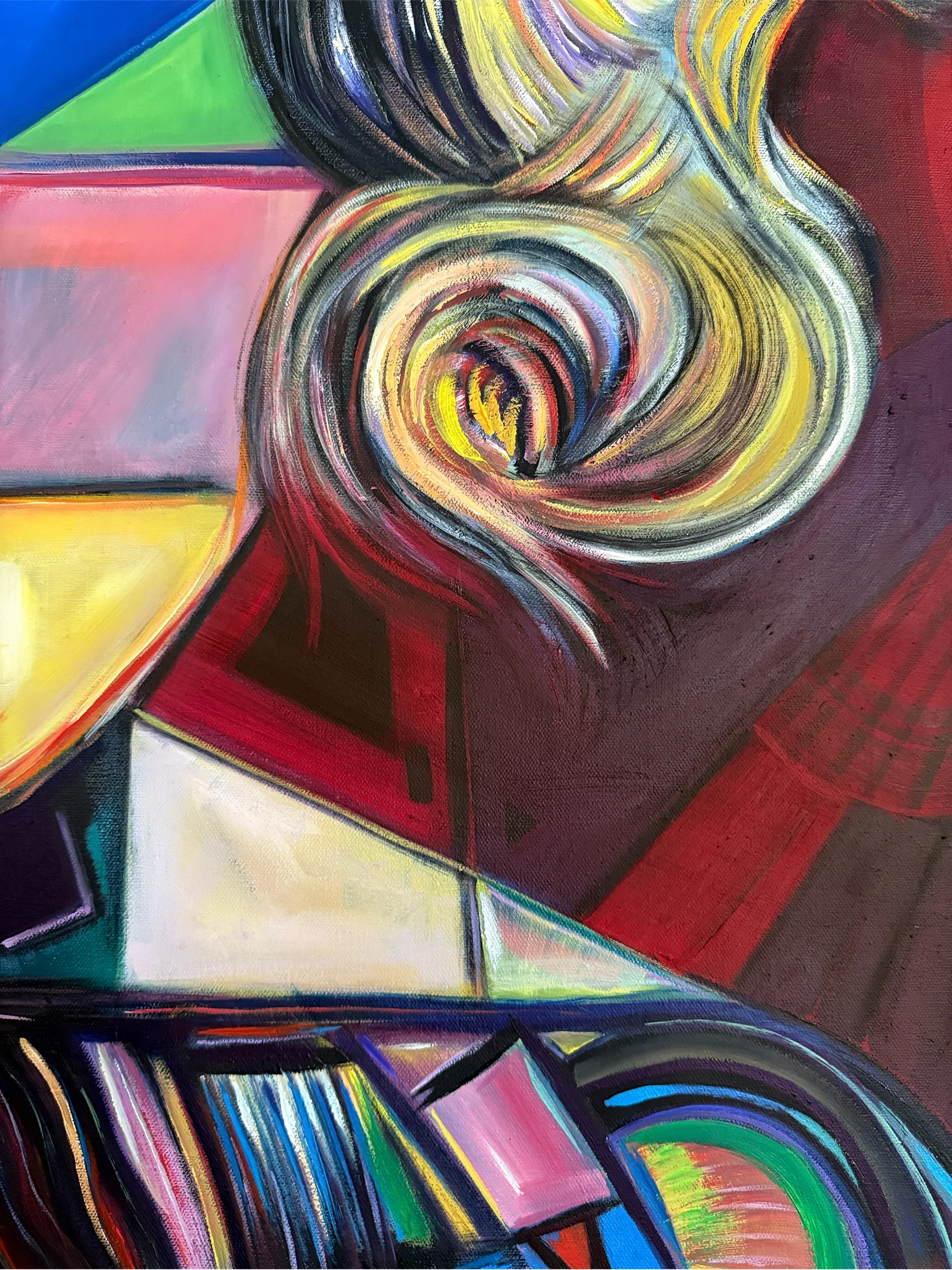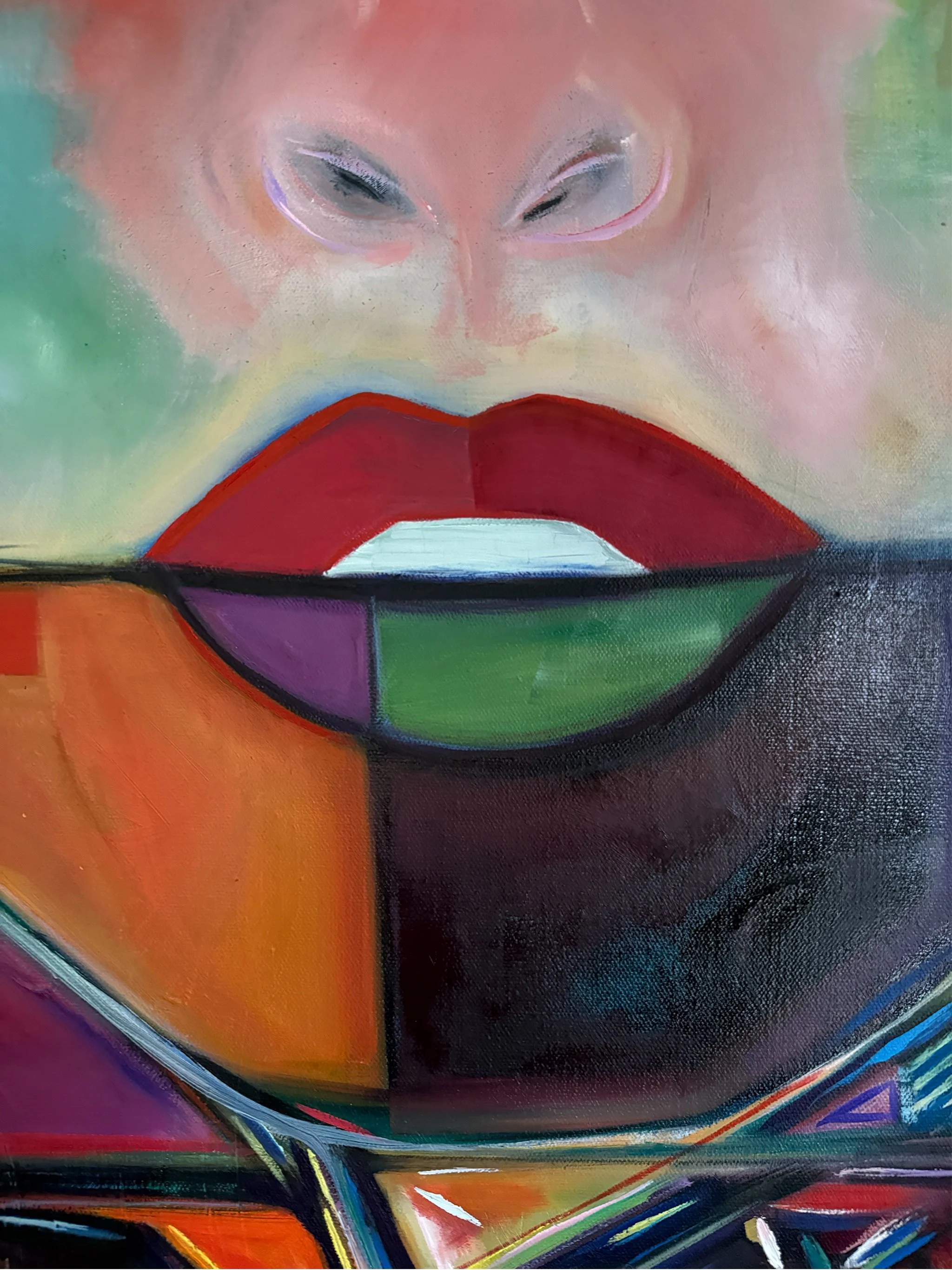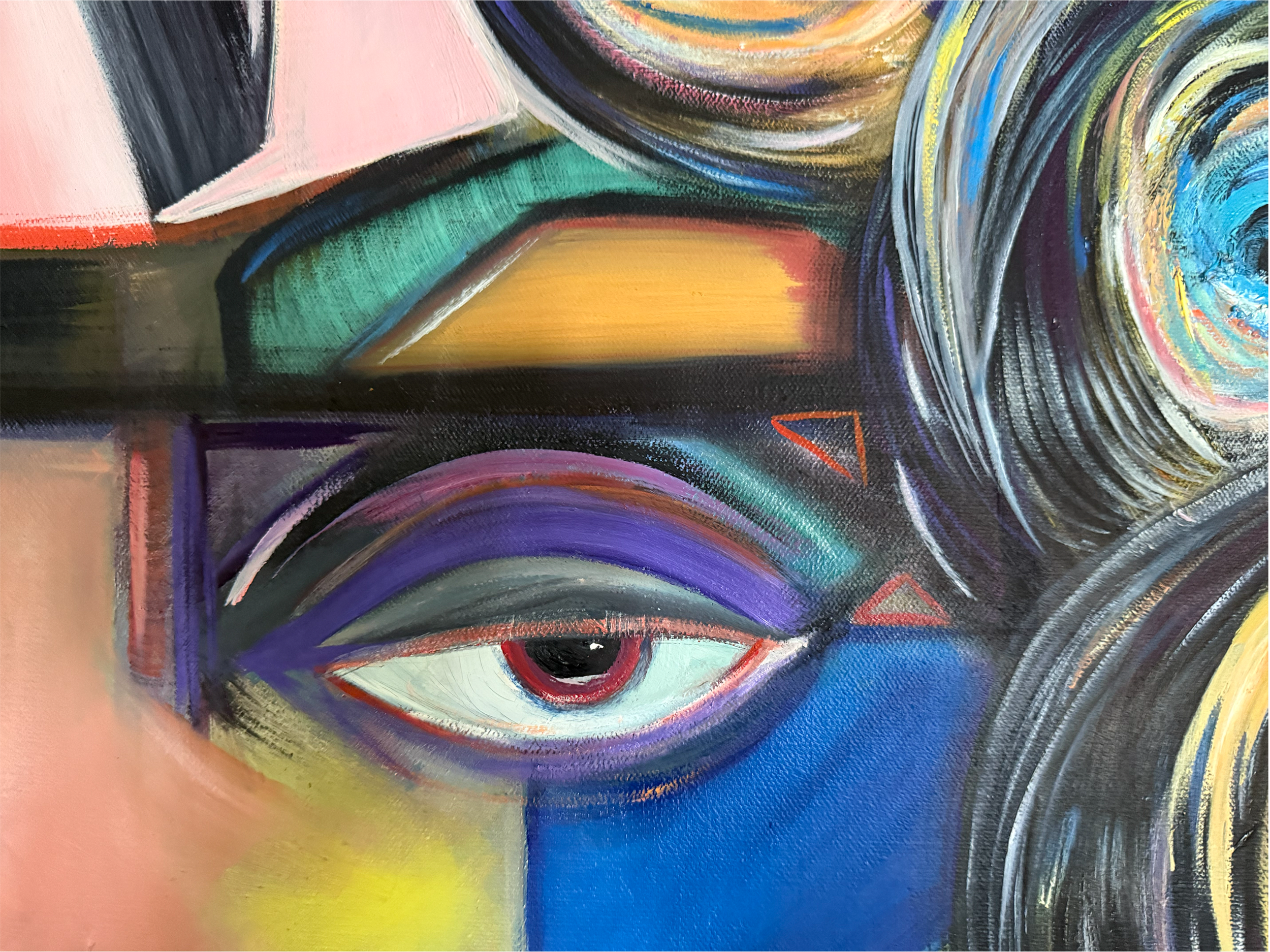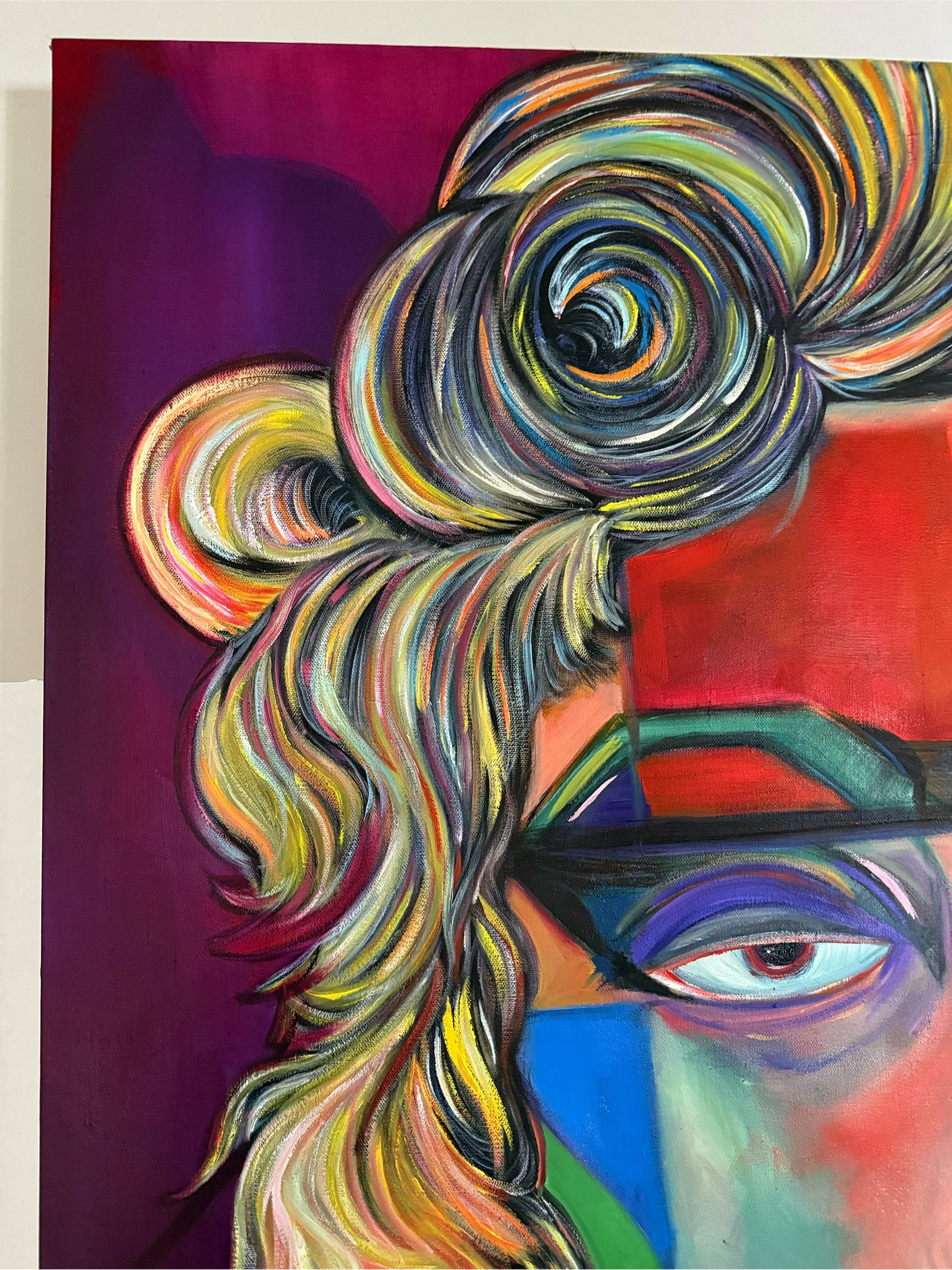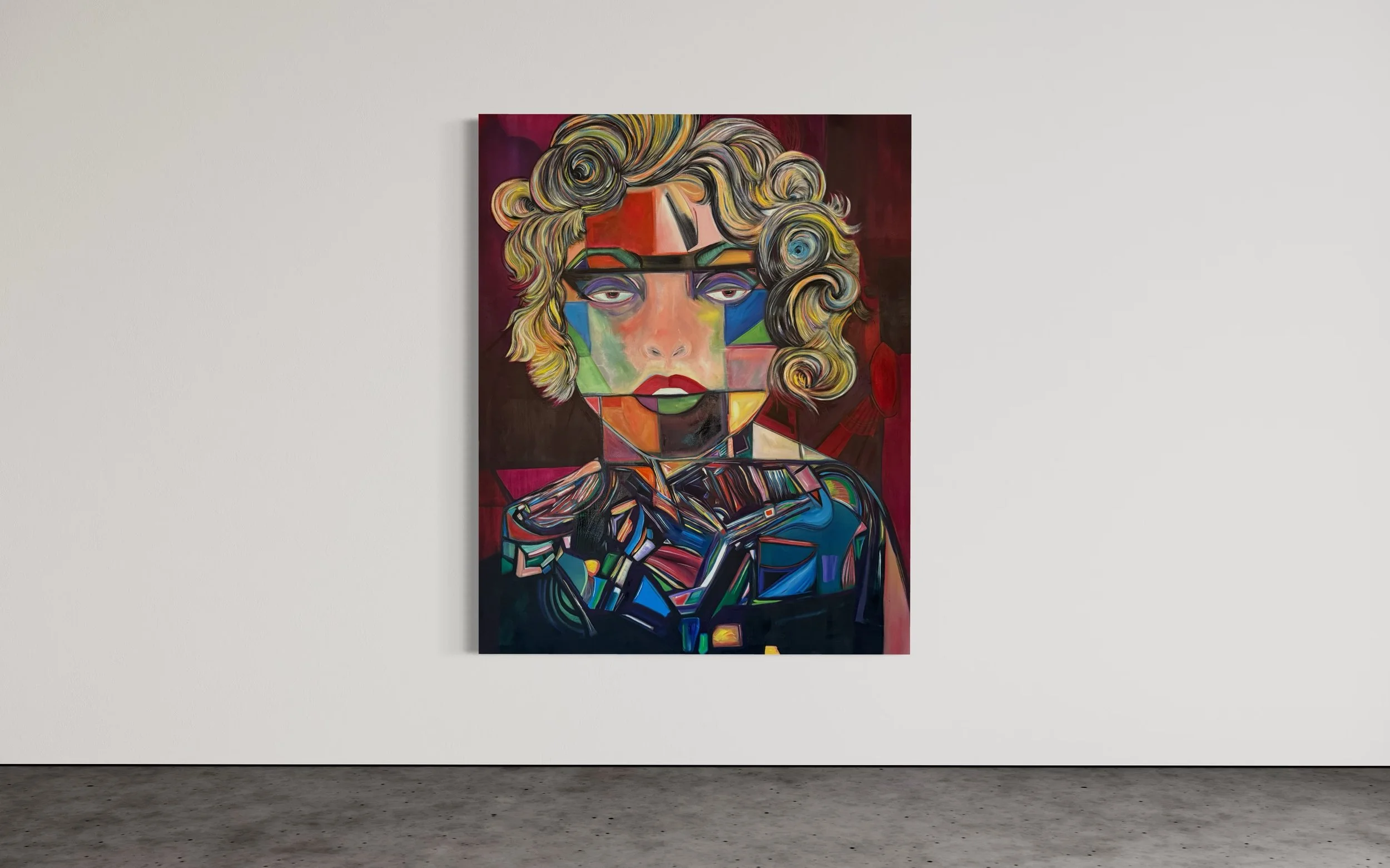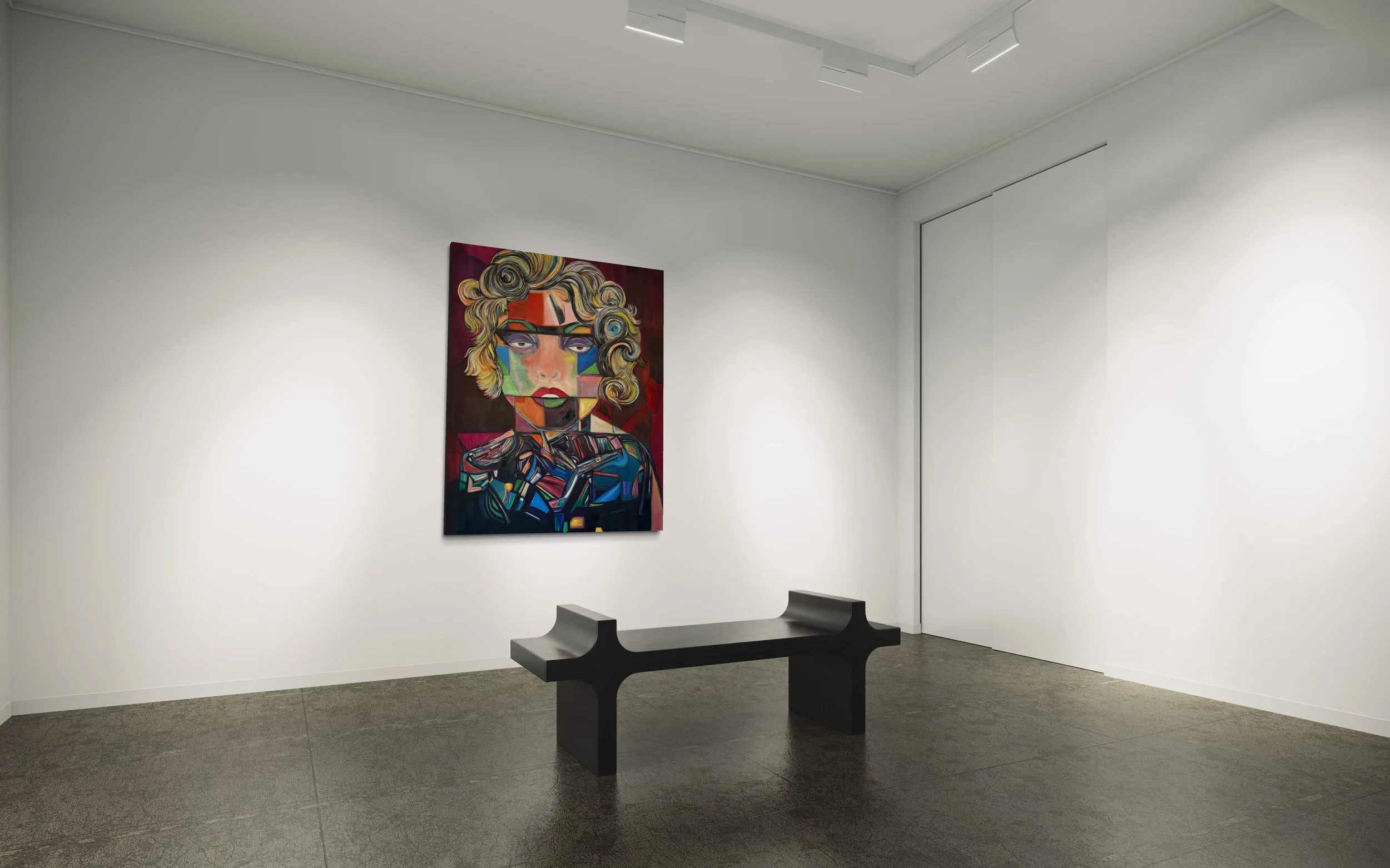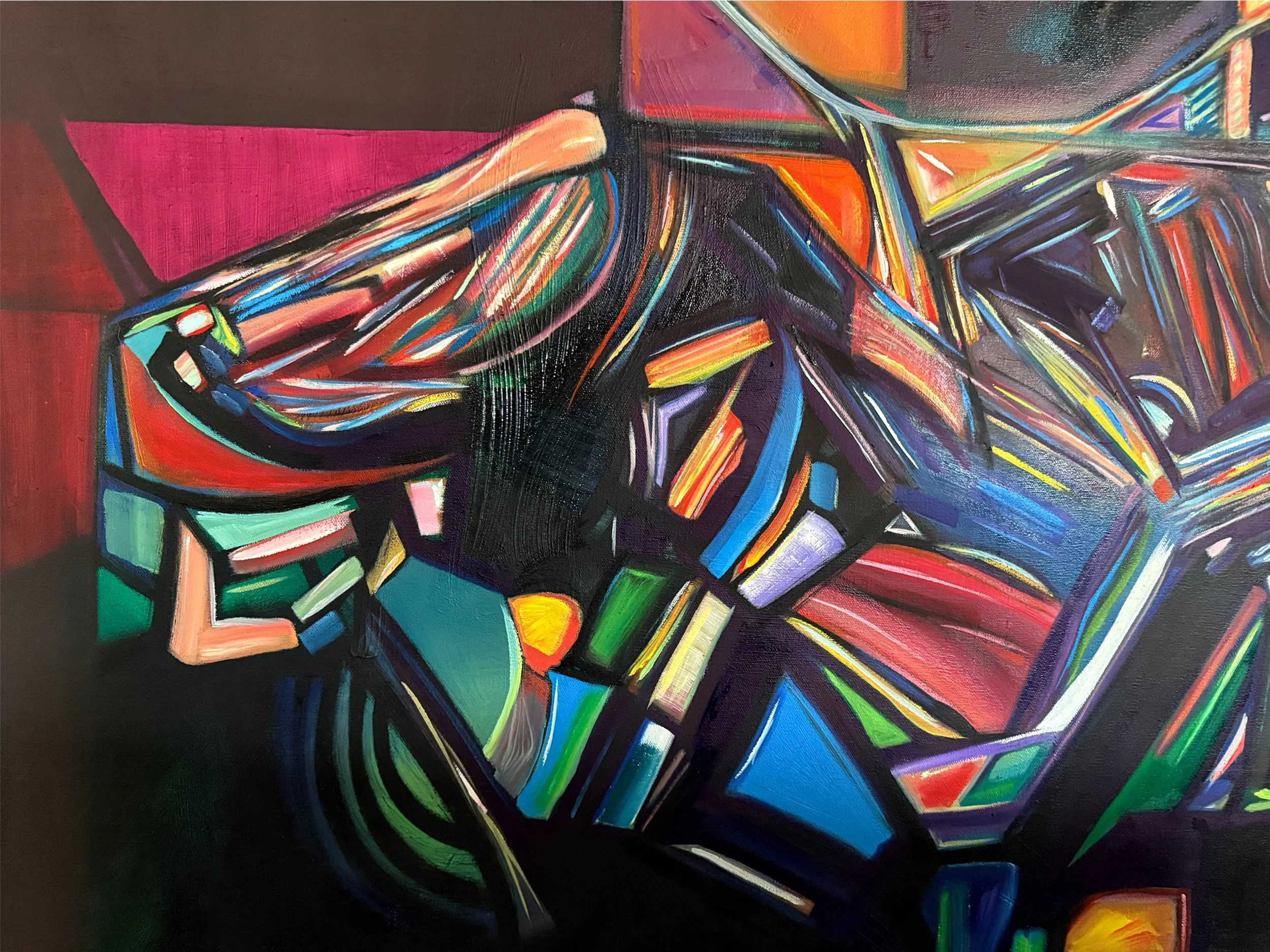
STAINED GLASS WIDOW
Oil on Canvas, 48” x 60",” 2024.
$2,400
-
Inspired by an Elisabeth Kubler-Ross quote that I once saw on a sympathy card, Stained Glass Widow presents the idea of ‘sensual solemnity.’ The sensation of grief that changes the way you feel about yourself. The disruption of loss shakes and shatters what was real, leaving us in broken pieces that will never fully fit together again.
-
To communicate this concept, I used the broken-color technique and a surrealist application of the Loomis method. Abstractions of color and shape crystallize on the incorporated grid, inverting midtones and creating new colors. Juxtaposing elements of soft and sharp forms run rampant in frenzied shards of color. The gravitas of this disorder conflicts with the gloom of her expression.
-
At 4×5 ft., the Widow looms over the viewer like the windows of a cathedral—windows stained with stories.
Her chest and shoulders are fractured prisms—chaotic and orgasmic.
-
Shades of scarlet and violet surround her—a setting both romantic and mournful. In traditional cathedrals, violet often signified suffering and loss, and was used by glaziers to replace the color black.
-
The lower third of the painting is shrouded in three separate shades of black, pierced by anxious lines. In using differing blacks as shapes of their own but side-by-side, I discovered a new way of looking at light. The shadows showed me that.
-
The physicality of the Widow is firm and direct, yet in her face, we see a hesitance.
-
Her mouth rests half-open, perhaps a sigh escapes but no words seem ready or willing to be spoken.
-
The Widow’s eyes are weary. Her expression is a soft supplication for relief. Abstracted colors play upon the field of her face. Both warm and cool tones blend and simultaneously exclude each other with an ambiguity that welcomes interpretation.
-
The question of who she is takes precedence over the what or the where. The answer is that she is grief. Beautiful and terrible, she haunts the room like a spectre at a feast for your eyes.
-
Stained Glass Widow is a window into sorrow, which is never simple and exceeds the boundaries of mere sadness. In that space, where sorrow is sweet and tears are drops of light in the shadows, something new and strange steps forward. Loss exposes us to ourselves in a way that forces us to notice.
-
Not long ago, at the wake of a friend, I saw the following quote from Kubler-Ross, etched in gold on the front of a card: “People are like stained-glass windows. They sparkle and shine when the sun is out, but when the darkness sets in, their true beauty is revealed only if there is a light from within.”
People may very well be windows. We are often far more transparent than we intend to be.
But, for me and perhaps for the Widow, as well, sorrow is a broken mirror in an empty room.
